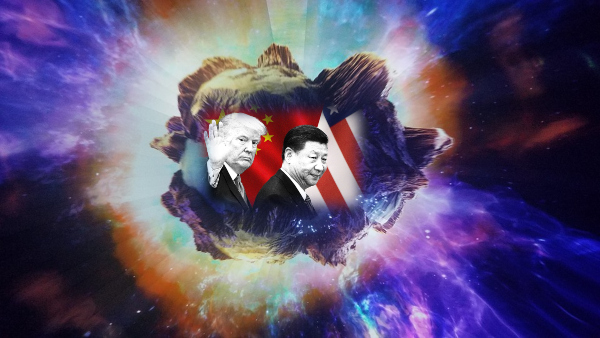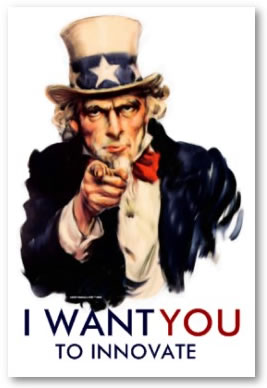A Fourth of July Celebration

GUEST POST from Art Inteligencia
As we gather to celebrate the Fourth of July, our nation’s Independence Day, we not only rejoice in the freedoms and values that define America but also reflect on the incredible ingenuity that has propelled our country forward. From the light bulb to the Internet, American innovations have played a key role in shaping the modern world. In honor of this patriotic occasion, let’s take a moment to celebrate the Top 10 American Innovations of All Time — milestones that exemplify the pioneering spirit and relentless pursuit of progress that define our great nation.
1. The Internet
Arguably the most transformative innovation of the 20th century, the Internet was born out of American ingenuity during the late 1960s under projects like ARPANET. It has revolutionized communication, commerce, entertainment, and access to information. It is the backbone of the digital age, making our world more connected than ever before. As we celebrate our independence, it’s particularly fitting to honor the Internet, a creation that has democratized information and connectivity globally. The Internet has transformed how we communicate, learn, and do business. It’s a tool that fosters freedom of expression and connects us all, embodying the spirit of liberty we cherish.
2. The Light Bulb
When Thomas Edison perfected the incandescent light bulb in 1879, it marked a new era in human history. The ability to illuminate spaces effectively and efficiently extended the day’s productivity, paving the way for the modern lifestyle and countless subsequent innovations. Much like the fireworks that light up our skies on the Fourth of July, Edison’s innovation illuminated the path to a new era of progress and possibility.
3. The Airplane
The Wright brothers’ first successful flight in 1903 epitomizes American daring and inventiveness, with the first controlled, sustained flight of a powered aircraft. Their breakthrough not only shrank the world in terms of travel time but also laid the foundation for an entire industry that employs millions and generates trillions of dollars globally. Their achievement made the skies accessible, bringing people closer together and making global travel a reality. Just as the Fourth of July celebrates freedom of movement and the pursuit of happiness, the airplane opened new horizons for all.
4. Personal Computer
While computing concepts had been around for years, it was American pioneers like Steve Jobs and Bill Gates who brought the personal computer into homes and offices worldwide. The launch of the Apple Macintosh and the widespread adoption of Microsoft Windows revolutionized how we work, create, and communicate. The Fourth of July is a reminder of our nation’s innovative spirit, and the personal computer is a testament to what we can achieve through curiosity, creativity, and determination.
5. Smartphone
Apple’s introduction of the iPhone in 2007 was a watershed moment in technology. This little device, combining a phone, a music player, a camera, and a portable computer, has since evolved to influence every aspect of modern life—changing how we interact, access information, and entertain ourselves. As we celebrate our nation’s independence, we can take pride in knowing that one of the most transformative tools for communication and freedom of information was born from American ingenuity.
6. Internet Protocol Suite (TCP/IP)
Developed by Vint Cerf and Bob Kahn in the 1970s, TCP/IP is the fundamental framework for the Internet. This set of communication protocols enables the interconnection of diverse networks, making the global Internet possible. Without it, the complex web of networks we rely on would not function. Just as the Declaration of Independence established the principles of our nation, TCP/IP set the standards for global communication, making the World Wide Web an integral part of our daily lives.
7. The Assembly Line
Introduced by Henry Ford in 1913, the assembly line revolutionized manufacturing. By drastically cutting production times and costs, it enabled the mass production and democratization of consumer goods. This innovation not only transformed industries but also played a crucial role in shaping modern economies. As we celebrate the Fourth of July, we honor this innovation that embodies the American ideals of efficiency, ingenuity, and the drive to make life better for all.
8. The Cotton Gin
Invented by Eli Whitney in 1793, the cotton gin revolutionized the agricultural industry by efficiently separating cotton fibers from seeds. This innovation catalyzed the cotton industry, leading to significant economic growth, particularly in the American South. This Fourth of July, we recognize this pivotal innovation that showcased American problem-solving skills and led to transformative economic growth.
9. GPS Technology
Initially developed by the U.S. Department of Defense, the Global Positioning System (GPS) has since been made available for civilian use and has transformed navigation and location-based services. Whether for cars, smartphones, or even precision agriculture, GPS has become an indispensable tool in modern society. On this Independence Day, we salute this innovation that highlights our nation’s commitment to technological advancement and safety.
10. CRISPR-Cas9
This innovative gene-editing technology, developed by Jennifer Doudna and Emmanuelle Charpentier, has revolutionized genetic engineering. Although it’s a collaborative global effort, American research and institutions played a significant role in developing and refining this breakthrough. CRISPR-Cas9 holds promise for treating genetic disorders, improving crop resilience, and more. This Fourth of July, we honor this innovation that holds the promise to cure diseases, improve agriculture, and inspire future generations of American scientists.
Conclusion
As fireworks illuminate the sky this Fourth of July, let’s celebrate not only our nation’s independence but also the remarkable innovations that reflect the American spirit of discovery and progress. These top ten innovations, each a beacon of ingenuity and determination, continue to shape our world and the future.
May we draw inspiration from these milestones as we cherish our freedom and commit to fostering a culture of innovation that will drive our nation forward for generations to come.
Happy Fourth of July!
Image credit: Unsplash
![]() Sign up here to get Human-Centered Change & Innovation Weekly delivered to your inbox every week.
Sign up here to get Human-Centered Change & Innovation Weekly delivered to your inbox every week.




 The Setup
The Setup The
The 

